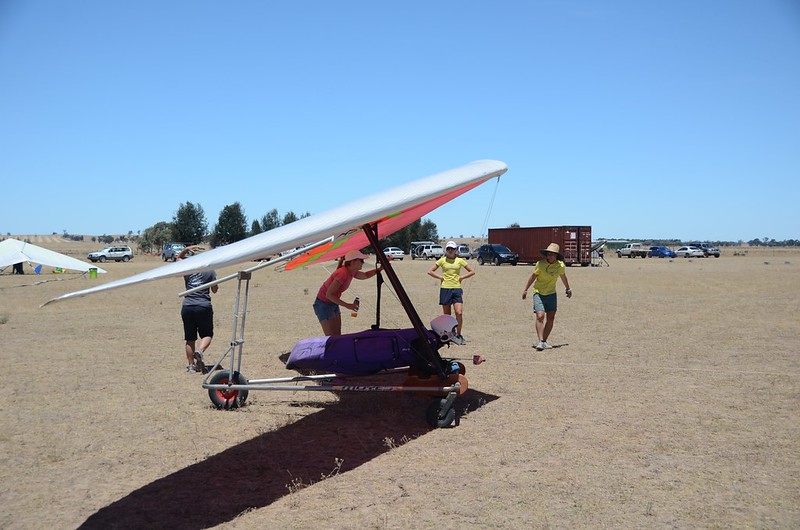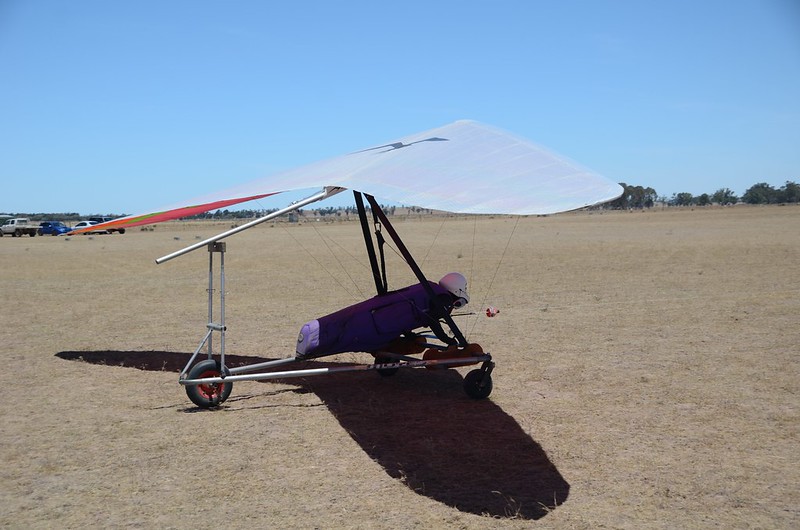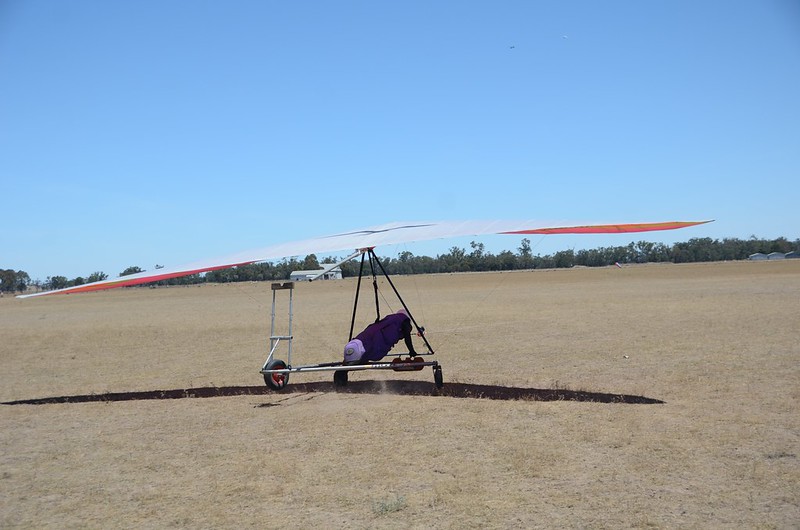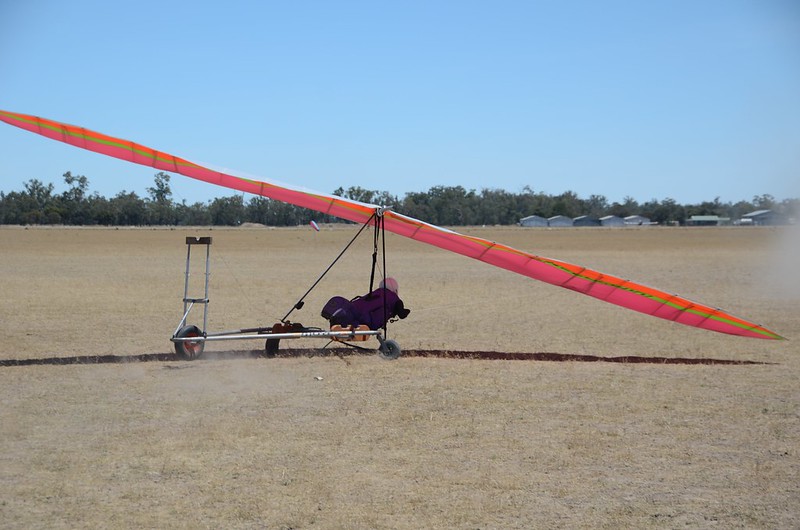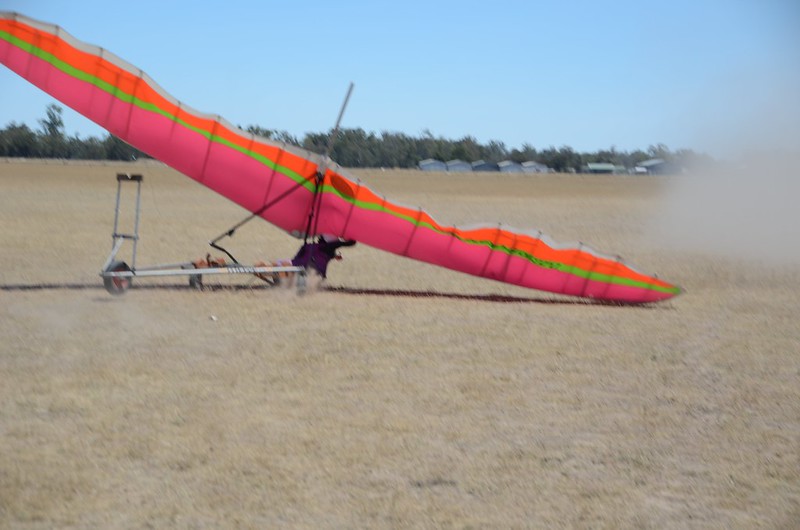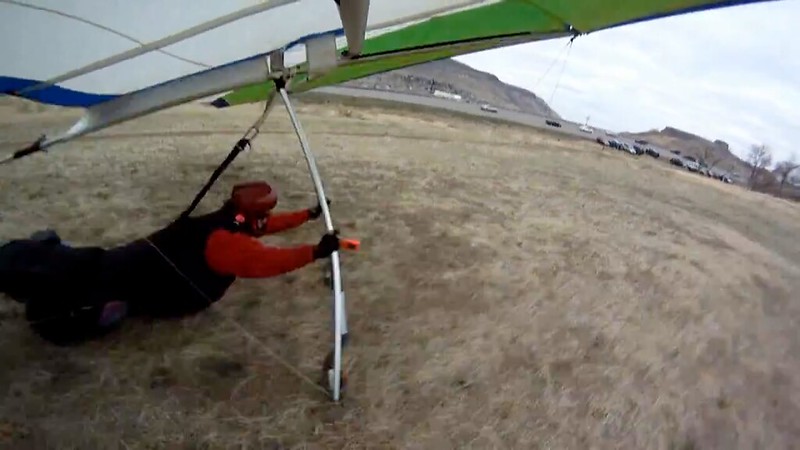Forbes Flatlands, an aerotowing accident review
Foot launching is virtually nonexistent in aerotowing because, even in hang gliding, there are occasional limits to degrees of stupidity. (Note that foot landing is virtually nonexistent in tandem flying.)Dan G - 2014/01/18 16:30:27 UTC
I have often wondered why foot launching is not more common with aerotowing.
- So what's the purpose of foot launching in scooter tow?Are the physical requirements really much different than scooter tow?
http://www.hanggliding.org/viewtopic.php?t=30632
reinventing ultalight flying
To teach a complex dangerous technique starting Day One, Flight One to a bunch of people who may well never need it?Dave Hopkins - 2014/01/13 19:17:43 UTC
I have pondered how to make flying as easy and safe as possible . Realistically learning to foot launch, land and weight shift control is rather difficult for most people. It is supposed to be simple and cheap but it is real difficult and dangerous unless you are young and in good shape even then the success rate is low.
I've thought an easier type of wing would be a wire braced rigid wing with stick control , a cage, trike. You would be bungee launched and land on wheels. No running, flaring . No prone flying head down close to the ground. After all, we are really into this for the flying who really gives a crap about foot launching weight shift control fly like a bird .
High performance weight shift HGs are for a very few. A rigid with flaps and aerodynamic controls and real stability with the same or better performance could be flown by a wider range of pilots I think.
A light weight ,easy to control ,easy to launch system that is physically easy to handle would give many more people success at this cheap light weight flying.
Maybe it's just because I am getting older plus I see lots of older people that would love to learn to fly but are not really physically able to do the whole foot launch deal.
Maybe I will build such a wing system and reinvent flying. Or at least finish my cage on my VR. I could put a cage on my B model and teach people on that.
KSS
- Scooter is used to get lightly equipped kindergarteners flying Condors skimming the surface in dead to light morning and evening conditions and is controlled by a driver parked several yards from launch with his hand on a throttle he can use to regulate tension to whatever he wants.
- Aero is used to get heavily loaded experienced flyers typically flying intermediate to advanced high performance gliders to altitude in the most violent thermal conditions possible, quite often in significant switchy and/or cross winds, and is controlled by a driver 250 feet away with his own plane to fly and a mirror who doesn't give a flying fuck about the glider's safety and delivers three tension settings - high, very high, and off, often in that order.
- The carnage that would result from eliminating dollies is unimaginable. Given the hostility hang gliding culture has towards hook-in checks the carnage that would result from unhooked launches alone is unimaginable.
- Walk up to a launch line with a twenty dollar bill in your hand and offer it give it to someone who'll foot launch. See what kind of response you get.
- Don't just guess, Steve. Don't even open your idiot fucking mouth until you figure out some way to increase your IQ tenfold or better.Steve Forslund - 2014/01/19 06:12:46 UTC
Just guessing but it seems like timing is more critical and the towplane / pilot may be at more risk?
- Fuck the towplane and its goddam driver. When Robin Strid was killed slamming into the paddock still on tow because he foot launched because the carts Bill and Bobby made available were dangerous junk and because he was flying with one of Bill and Bobby's piece of shit Quallaby releases just how much danger was Bobby and his piece of shit Dragonfly in?
- How 'bout citing a single instance of a goddam tug being endangered by an out of control, locked out, crashing glider before we start getting so deeply concerned about the safety of these motherfuckers who mandate for us as a safety measure - power failure on takeoff - the one thing that ACTUALLY crashes them?
- Yeah. The best way to make things as safe as possible for the tug is to make things as safe as possible for the glider:
-- smooth well groomed takeoff/landing strip
-- dolly which:
--- keeps the glider level and properly trimmed during acceleration
--- allows the:
---- pilot to:
----- start and stay prone with both hands on the basetube
----- use a release he can blow instantly with both hands on the basetube
---- glider to accelerate to whatever it needs to - even with a significant tailwind
-- wheels which allow the glider to survive and often recover from a premature separation from the dolly
-- glider pilot with the ability to stay in position
-- two point bridle which allows the pilot the pitch control range to keep from climbing or getting blown above the tug
-- tug pilot who constantly monitors and adjusts for the glider's situation
-- release which allows the pilot to blow tow instantly:
--- in the event that the tug is experiencing an engine or other control problem
--- without getting farther out of position
-- glider weak link which protects against structural overload and will only break in a lockout so the:
--- tug doesn't have to do needless launch and landing repetitions
--- glider doesn't get killed by a whipstall
-- tug weak link in excess of the glider weak link so the tug doesn't have to:
--- bake in the sun while the towline is recovered and reconnected
--- pay fines which would be better spent on engine and runway maintenance
-- secondary weak links at both ends to ensure separation regardless of bridle wraps
And what's perfectly acceptable and/or often mandated:
- adequate takeoff/landing strip
- dolly
- bare basetube
- twist controlling glider "pilot"
- pro toad bridle
- tug driver who may or may not be aware that he's got a glider behind him
- release inaccessible in any emergency and inoperable under load
- standard aerotow weak link which:
-- is supposed to:
--- keep the glider from getting too far out of whack
--- protect the tug from a glider which gets too far out of whack
-- forces multiple launches to get the job done
-- often makes it impossible to get to workable altitude on a good day
-- subjects the glider to a real good chance of getting stalled and crashed every time it launches in thermal conditions
- tug weak link which guarantees the glider will end up with 250 feet of Spectra draped over its basetube
- no secondary weak links at either end which translates to zero assurance of weak link protection anywhere
http://www.chgpa.org/forums/viewtopic.php?f=2&t=3600
Weak link question
Here's your solid track record system in action in the real world, shit head:Jim Rooney - 2008/11/23 19:42:44 UTC
There is more to the bar than simply strength.
See we've got a system that has an extremely solid track record. It's a high bar and you can't improve one aspect at the expense of an other. (you don't get to lower my safety margins for any reason)
http://ozreport.com/13.238
Adam Parer on his tuck and tumble
Yeah, when the tug stops functioning as a tug and becomes an ultralight toy it's got extra margin away from stall and can climb and maneuver better.Adam Parer - 2009/11/25
Airborne Gulgong Classic
New South Wales
Due to the rough conditions weak links were breaking just about every other tow and the two tugs worked hard to eventually get everyone off the ground successfully.
BUT:
- No tug has EVER been stalled because a weak link didn't break.
- Anybody who thinks ANYBODY's safer doing two launches and landings in rough conditions for every successful tow is a total moron - and that's before factoring in gliders crashed on launch by the focal point of their safe towing systems.

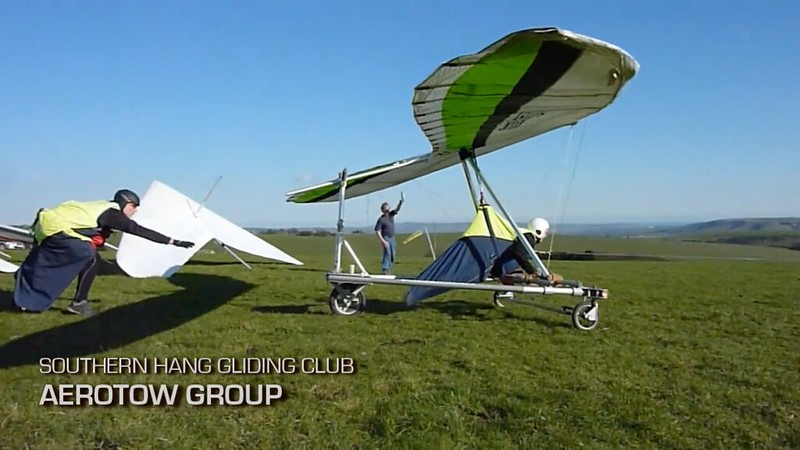
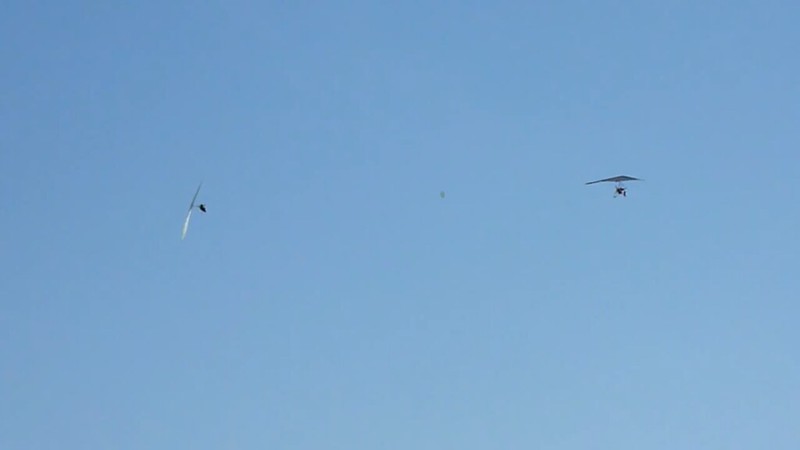

 Good height on the tow system and looked to be a good turnout there also.
Good height on the tow system and looked to be a good turnout there also.